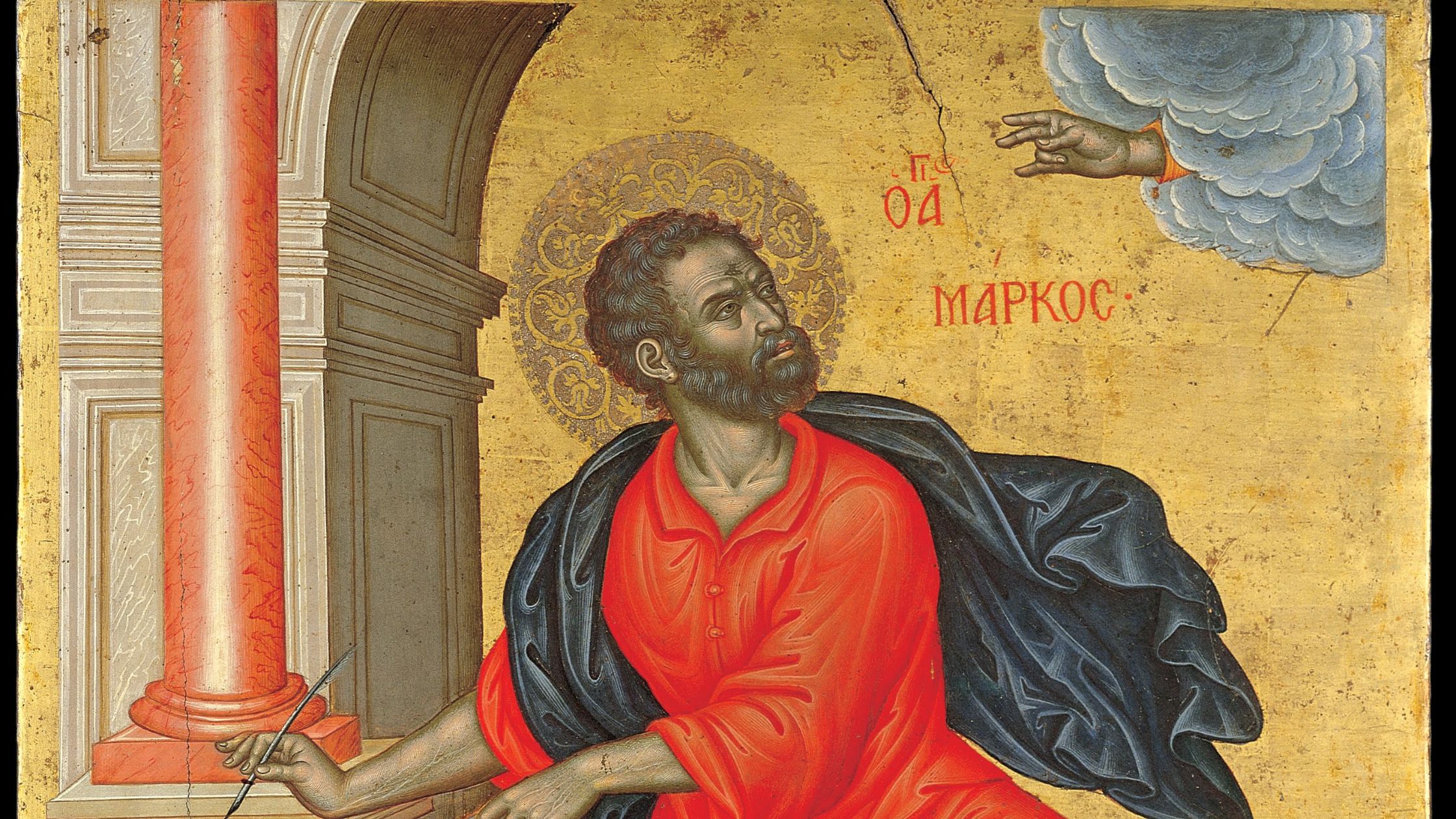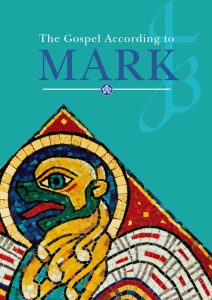Setting the scene
The story of Jesus is set in a remote corner of the Roman Empire, on a corridor of land between sea and desert which had already been trampled for centuries by conquering armies of Babylon, Syria and Egypt when Rome began to dominate the area half a century before the birth of Jesus. It was home to the stubborn race of Jews, who refused to follow the other peoples of this great empire by abandoning their God and their religious tradition to fall in with the worship and culture of the Greco-Roman gods. This tradition was focussed on Jerusalem, i tself dominated by the fabulous Temple of Herod, for which Jerusalem was renowned among the Romans as “far the most distinguished city of the East” ( Pliny, Historia Naturalis). The story of Jesus begins in the Galilean countryside, some 70 miles to the north, where he first proclaimed the Kingdom of God (Mk 1:15), the long- awaited deliverance of Israel. It reaches its climax in Jerusalem, when Jesus confronts the authorities in the heartland of Judaism with his message (11:15-19), only to be rejected and executed with the connivance of the Roman governor (15:1-15). That is not the conclusion of the story, for Mark deliberately leaves his gospel suggestively open-ended (16:8).
The Good News of Jesus Christ
The overwhelming majority of scholars agree that the gospel according to Mark is the earliest of the three ‘synoptic’ gospels (so called because they share roughly the same outline, and so can be viewed concurrently at one glance) to be written down. Mark was chosen to put together a record of the stories which formed the Good News of Jesus Christ. He did not write a biography of Jesus in the modern sense, for he leaves out many details which would be fascinating to a modern reader: the appearance of Jesus, his childhood, his psychological development. He chooses and presents the incidents in order to convey the message of Jesus Christ, son of God.
Mark the evangelist
Who Mark was we do not know, and there is little reason to link him to any of the other people so named in the New Testament. ‘Mark’ was, after all, one of the commonest names in the Roman world. There is no suggestion that he was ever a companion of Jesus. Rather he assembled the stories that he received from the tradition. He may well have been a catechist who used the stories about Jesus in his own instruction, and his style betrays many of the features of oral story-telling. He is a master story-teller, with an eye for visual detail. He ‘zooms in’ on one memorable detail, like Jesus in the boat, “…his head on a cushion, asleep” (4:38), or John the Baptist’s severed head on a dish (6:28). His language is simple and direct, the rough style of Greek which would have been used by ordinary people all around the eastern mediterranean. It has been described as ‘kitchen Greek’. Many of the stories and sayings even hold traces of the Aramaic language in which Jesus himself will have spoken and in which the stories will originally have been told. But there is a uniform style throughout the gospel, which leaves no doubt that Mark was a real author.
At the same time, we can often tell from the emphasis placed on the stories that they will have been told and re-told in the earliest Christian communities to provide answers to questions: should we fast as the Jews do (2:18-20)? Should we observe the Jewish laws about clean and unclean food (7:14-23)? What will happen to those who are persecuted for following the way of Jesus (8:34-35)? Did Jesus know that such persecution would occur (13:9-13)? From the attitude to Judaism shown in the gospel, and from the limited knowledge of it presupposed (e.g. 7:11), we may deduce that Mark was writing for gentile Christians. Some early writers link Mark to Peter and even to Rome, but there can be little certainty about this. Nor can we know the date, for it is even unclear whether Mark is writing before or after the destruction of Jerusalem in AD 70; conventionally, therefore, the gospel is placed shortly before or after that event.
With this simple style Mark combines a brilliantly artistic pattern of arrangement, not necessarily in chronological order, but often grouping incidents of the same kind. So he gives a sample day of Jesus’ activity on a Sabbath day in Capernaum (1:21-34), or assembles a group of Jesus’ parables together (4:1-34). He balances a collection of controversies between Jesus and the Jewish authorities in Galilee early in his ministry (2:1-28) with another such collection of controversies with the Jewish authorities at Jerusalem in the final stages of his ministry there (12:1-40). Even the final week in Jerusalem may result from Mark’s arrangement, for John depicts four different visits to Jerusalem.
Mark often ‘sandwiches’ a story between two other stories to bring out its meaning. He ‘sandwiches’ the story of the cleansing of the Temple between Jesus’ curse on the fig-tree and the return of Jesus and the disciples to find the fig-tree withered (11:12-21). This is to hint that the worship conducted in the Temple was corrupt – the fig-tree of Israel was withered. The positioning of events is often symbolic: after the disciples have consistently failed to realise who Jesus is, we hear the story of the cure of the blind man at Bethsaida (8:22-26), and immediately afterwards Peter’s eyes are opened and he acknowledges Jesus as the Messiah (8:29). Mark uses the fact that the Christian audience of the Gospel knows more than the actors in the story to create irony: the soldiers mock Jesus as King of Israel (15:18), when all the time we know that this is just what he was. James and John perkily ask for a position on Jesus’ left and right (10:35-40), not knowing that Jesus is soon to be crucified between the two thieves who share his crucifixion.
Such irony is helped by the whole pattern of the gospel. It begins with an introduction which proclaims to the reader who Jesus is, messiah and son of God. Then the first disciples are called (1:16-20) and begin slowly, so slowly, to learn who Jesus is. The turning- point comes at Caesarea Philippi, when Peter sees that he is the Messiah. But Peter still does not realise what this implies. Three times Jesus prophesies that he must suffer and die (8:31; 9:31; 10:32-34), but each time the disciples fail to receive the message (8:32; 9:32-34; 10:35-40), and Jesus needs to explain again and again that his disciples must join him in service and suffering (8:34-38; 9:35-37; 10:41-45). Not until Jesus has died on the Cross does any human being proclaim him as son of God (15:39). This human being is a gentile centurion. During his life the gospel describes only one meeting between Jesus and a gentile. She wins his help almost against his will by her courageous and cheeky response (7:28). The centurion’s acknowledgement is surely a symbol that at this moment the opening of the Good News to the gentiles begins.
The mystery of Jesus
Thus the whole gospel is centred on the mystery of Jesus. Jesus himself accepts none of the conventional titles offered to him, like Messiah (8:30), son of David (12:35-37), Lord (10:51). No ready-made formula suffices: he refers to himself by the mysterious, unexplained expression ‘son of man’. Does this merely mean ‘human being’, or is Jesus alluding to the ‘son of man’ in the Book of Daniel (Dn 7:13), who receives all power on earth from the Ancient of Days? Mark certainly understands the expression in this sense, as we see at the trial scene before the High Priest (14:61-62). Before then we watch as Jesus calls his first four disciples; they follow in bewilderment this unknown, charismatic figure (1:16-20). The amazement gradually grows as Jesus heals a sick man. Then he preaches with authority, not like the scribes and Pharisees, and they have to bow to his authority (1:21-28). He forgives sins as only God can do, and demonstrates his forgiveness with another cure (2:1-12). He interprets God’s Law, the Law given to Moses, with the same awesomely authoritative voice (2:27- 28). Then he silences the wind and the storm and passes over the backs of the waves, as only God can do (6:45-52). And all the time he is proclaiming that the Kingship or Sovereignty of God has come into the world in a new way, backing up his proclamation by wiping away the horrors of sickness and death, welcoming outcasts and sinners to forgiveness (2:15-17). The unclean spirits from whom he liberates the tormented sufferers cannot fail to acknowledge that God is at work in Jesus (1:24; 5:7), an acknowledgement which still leaves the human onlookers awed but puzzled. Even when Peter realises that he is the final messenger from God, the disciples three times fail to understand his predictions of suffering, three times let him down in Gethsemane and eventually run away (14:32-50). At the beginning they left all to follow him, and now the young man leaves all to run away naked (14:51-52)! Three times Peter denies knowledge of Jesus, just at the moment when Jesus is making his fullest claim to divine status before the High Priest (14:54-72). It is left to Pilate three times to declare his innocence (15:1-15) and to the centurion to declare that he is son of God. Even at the explosive final scene of the Empty Tomb (the last few verses after 16:8 form a later addition) the faithful women are merely terrified at the news that Jesus has risen from the dead, and flee uncomprehending, silent in their fear.
The failure of the disciples
Scholars have long puzzled why Mark placed such emphasis on the failure of the disciples. At first they respond enthusiastically, but soon Jesus begins to rebuke them sternly for their lack of understanding (4:40; 8:17- 18). They, on their part, can be sarcastic towards their Master (5:31; 6:37). Their behaviour often contrasts unfavourably with that of others who encounter Jesus in the course of his ministry (7:26-30; 8:22-26). Is this to show that it is easy to come to Jesus, but harder to stick by him when difficulties arise (as in the parable of the Sower 4:3-8)? Or is it a warning that any deep appreciation of Jesus is difficult of itself? Or is Mark looking sideways at a group in his own community who have failed under persecution, but must be brought back and reconciled? Or is it merely a literary technique to enable Mark to progress from one story to another? In any case, this is one of the major emphases of Mark’s presentation.
Reading Mark
The brevity, simplicity and vividness of Mark make this the easiest gospel to read straight through. Try reading it through as though you had never heard of Jesus before, and meet this personality and his message afresh! But also read it prayerfully and meditatively, remembering that it is the record of the Good News of God, given two thousand years ago to a particular group of people, but addressed as a message of salvation to the whole world.

